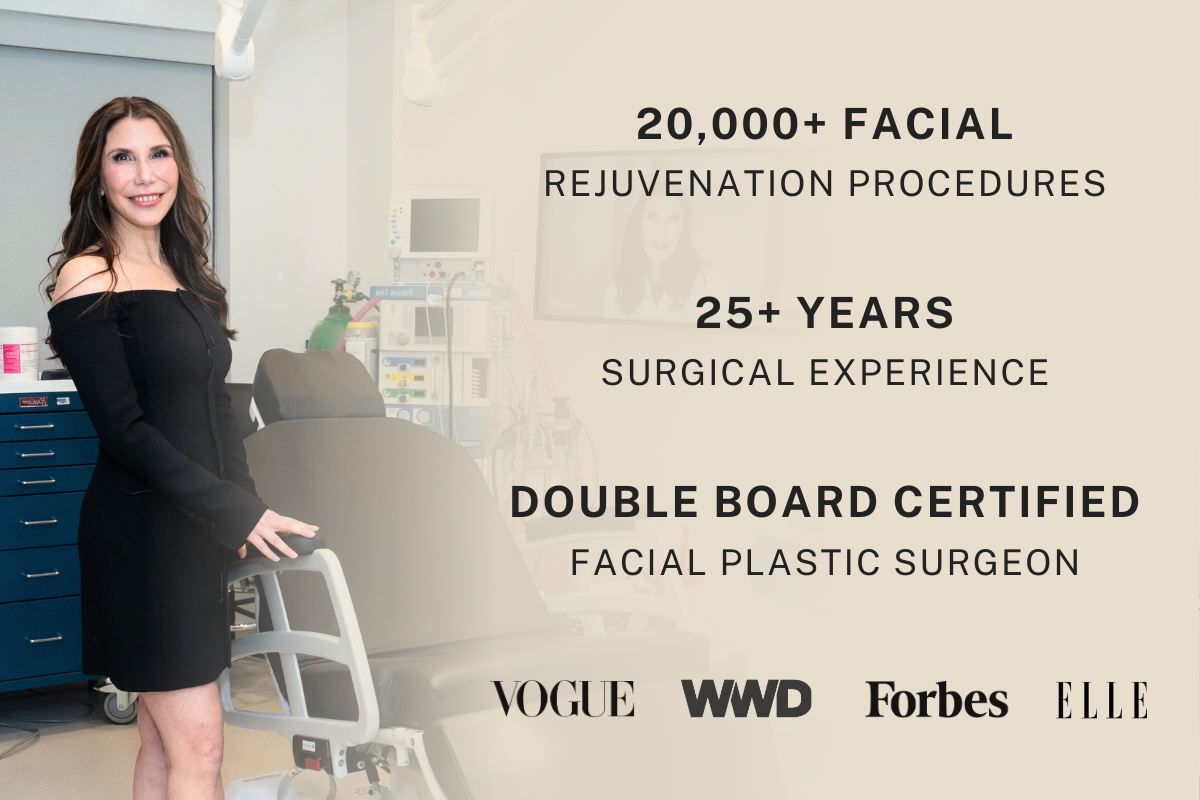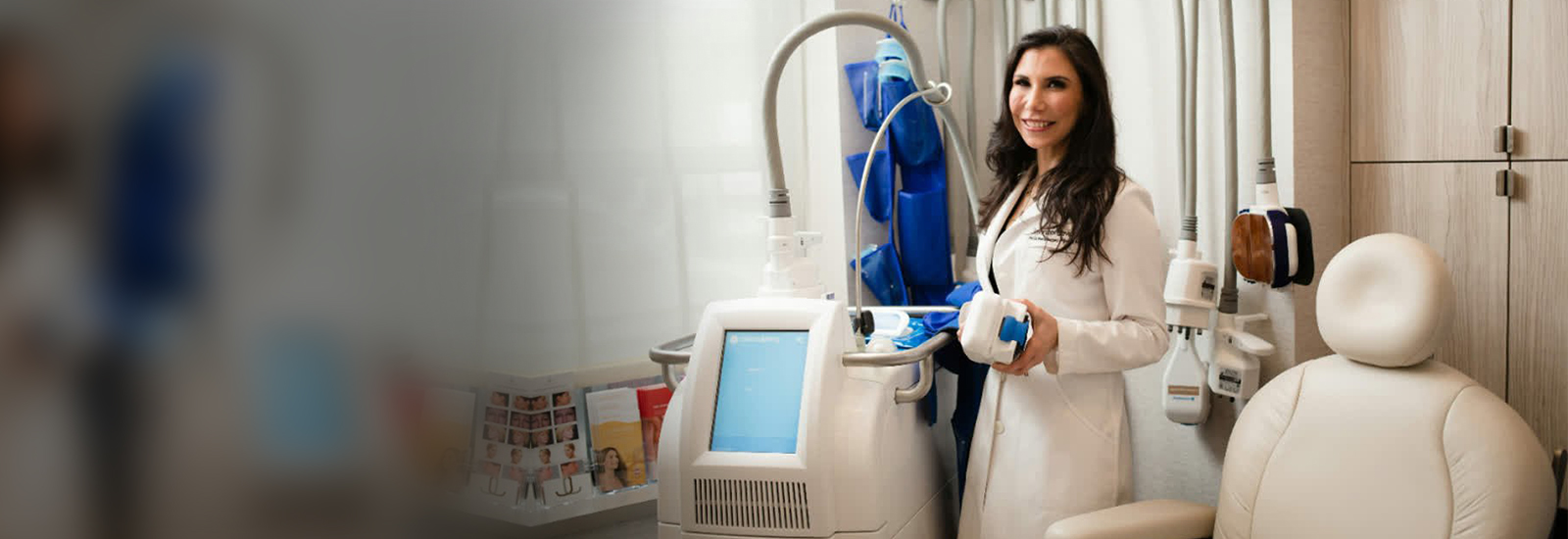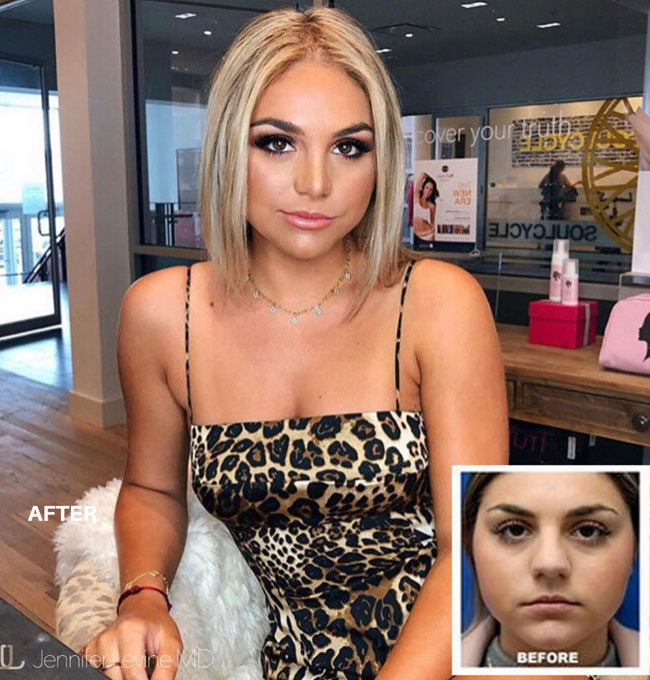As signs of aging evident on the face often extend to the neck, a facelift is often complemented by a neck lift for optimal results that look natural and complete. From a mini facelift to a deep plane lift, various degrees of facelifts can be performed to ensure your individual aesthetic goals are met.

Dr. Jennifer Levine, renowned facelift specialist in New York City, is one of few facial plastic surgeons to be double board certified through the American Board of Facial Plastic and Reconstructive Surgery and the American Board of Otolaryngology – Head and Neck Surgery, giving her a unique knowledge of the face and its underlying structures.
From the comfort of our fully-accredited private surgical suite on the Upper East Side of NYC, Dr. Levine uses the latest surgical facelift techniques to restore patients' youthful contours and confidence.
To start your transformation, book a facelift consultation with Dr. Jennifer Levine online, or call 212-517-9400 to speak to one of our team members.A Mini Facelift is typically suited for individuals who are beginning to notice signs of aging but do not yet have significant sagging or deep wrinkles. It primarily targets the mid-face and jawline, aiming to correct moderate sagging and enhance the definition of these areas. The incisions are usually smaller and hidden behind the ears, leading to a shorter recovery time. A mini facelift offers subtle rejuvenation and is often ideal for patients in their 40’s or those looking for preventative measures against aging.
The SMAS (Superficial Musculoaponeurotic System) lift focuses on the layer of tissue that covers, surrounds, and attaches to the deeper tissues and structures of the face and neck. This procedure involves repositioning and tightening the SMAS layer to achieve a more youthful appearance. The SMAS lift can effectively improve the appearance of sagging skin, jowls, and nasolabial folds by elevating the facial structure. The incisions are typically made along the hairline and around the ears, similar to a traditional facelift, but the primary focus is on manipulating the SMAS layer.
A lower facelift targets more pronounced signs of aging in the lower third of the face, including jawline contouring. This procedure is designed to address significant sagging skin and jowls. The incisions for a lower facelift can be similar to those of a mini facelift but could extend further to allow for more extensive skin removal and tissue adjustment. While a lower facelift includes some degree of neck improvement, especially concerning jowls and jawline definition, its primary focus is on the lower third of the face.
The Deep Plane Lift repositions and tightens the entire facial framework, including the SMAS and the deeper muscular layers, to restore a naturally youthful contour. Renowned for its ability to address more pronounced facial sagging, jowls, and deep-set nasolabial folds, the Deep Plane Lift offers significant enhancements by lifting the deeper layers of the face in unity. Incisions are strategically made along the hairline and around the ears to allow for deep structural enhancements while keeping changes discreet.
A neck lift addresses aging signs in the neck and under the chin, offering a more toned and slender neck profile. Often performed in conjunction with a facelift, a neck lift addresses loose skin and muscle banding in the neck (platysmas bands), effectively correcting the appearance of "turkey neck.” A neck lift may also include neck liposuction, which removes excess fat from under the chin.

Dr. Levine prioritizes patient safety and comfort, ensuring the facelift and neck lift procedures are pain-free, performed under general anesthesia. Post-procedure, medication may be prescribed to manage any discomfort effectively.
During the procedure, strategic incisions are made to minimize visible scarring—typically along the hairline and around the ears, possibly extending to the lower scalp. These incisions allow for the repositioning and tightening of facial muscles and the removal of excess skin, achieving a more youthful contour. The procedure may also include neck liposuction for optimal sculpting and balance. Depending on the extent of the procedure, a facelift procedure can take 2 to 6 hours.
Following surgery, sutures are typically removed within 5 to 9 days, based on individual healing and Dr. Levine’s assessment. A bandage is applied to minimize swelling and support the new facial contours for about 24 hours, with most patients reporting minimal discomfort, easily managed with prescribed medications.
Deciding to undergo a facelift or neck lift is a personal journey, and understanding who stands to benefit the most from these procedures can guide you toward making an informed decision. Ideal candidates for facelift and neck lift surgeries typically include individuals who:
Dr. Levine will evaluate your candidacy during your facelift consultation, which you can schedule online or by calling 212-517-9400.
Waking up from anesthesia, you may feel disoriented, similar to waking from a deep sleep, with possible temporary chills or nausea—common reactions that quickly subside.
Post-operative swelling, soreness, and bruising are normal and expected to gradually diminish over the following days. Dr. Levine is available to address any concerns, especially if symptoms intensify.
Recovery involves rest and minimal stress; however, keeping moderately active is beneficial. The visible improvements from your facelift or neck lift will evolve as swelling reduces, with initial results noticeable within a week and more significant outcomes developing over the following months.
During your initial consultation, Dr. Levine may also discuss non-surgical alternatives, such as Ultherapy or a liquid facelift, offering a range of treatments tailored to your specific needs and goals.
